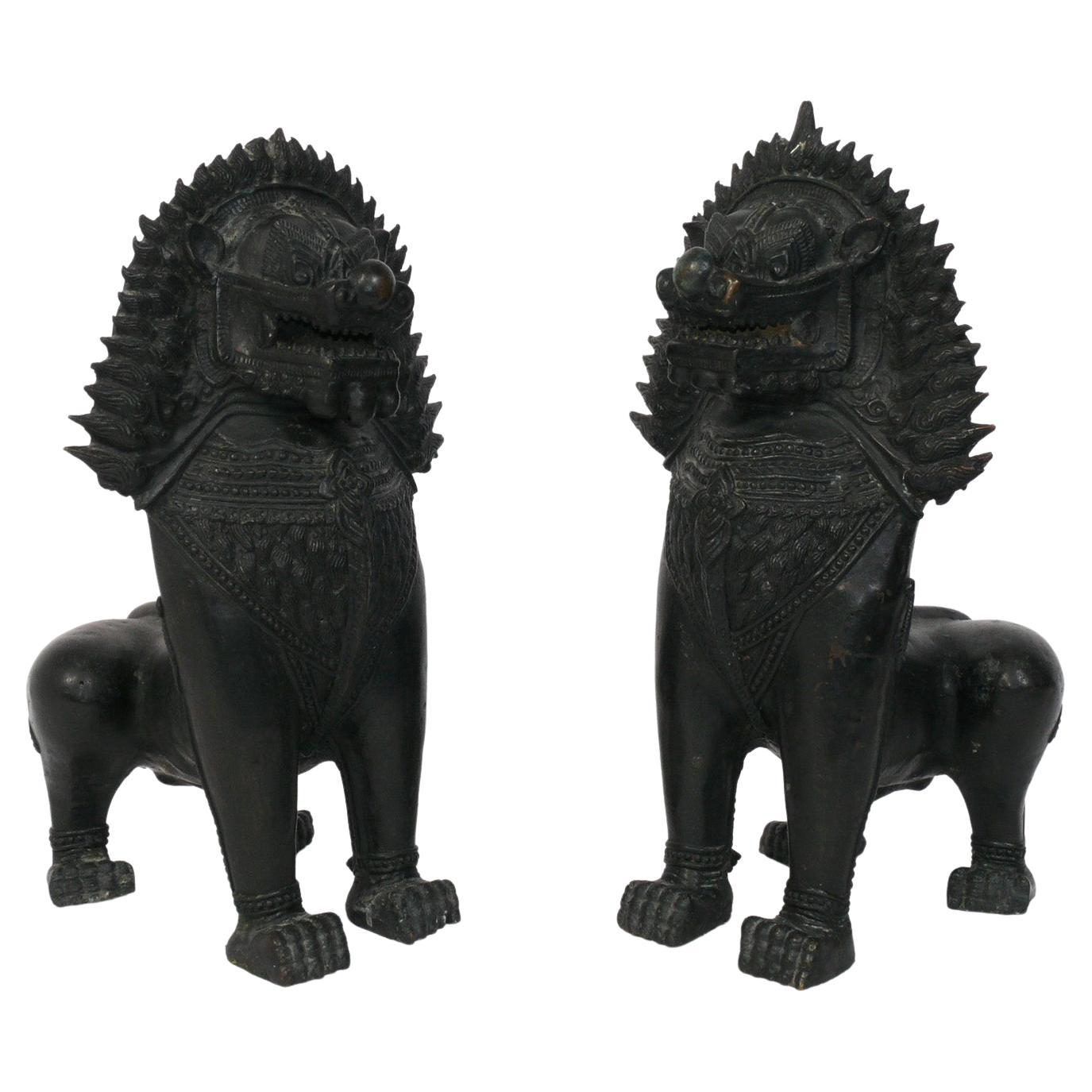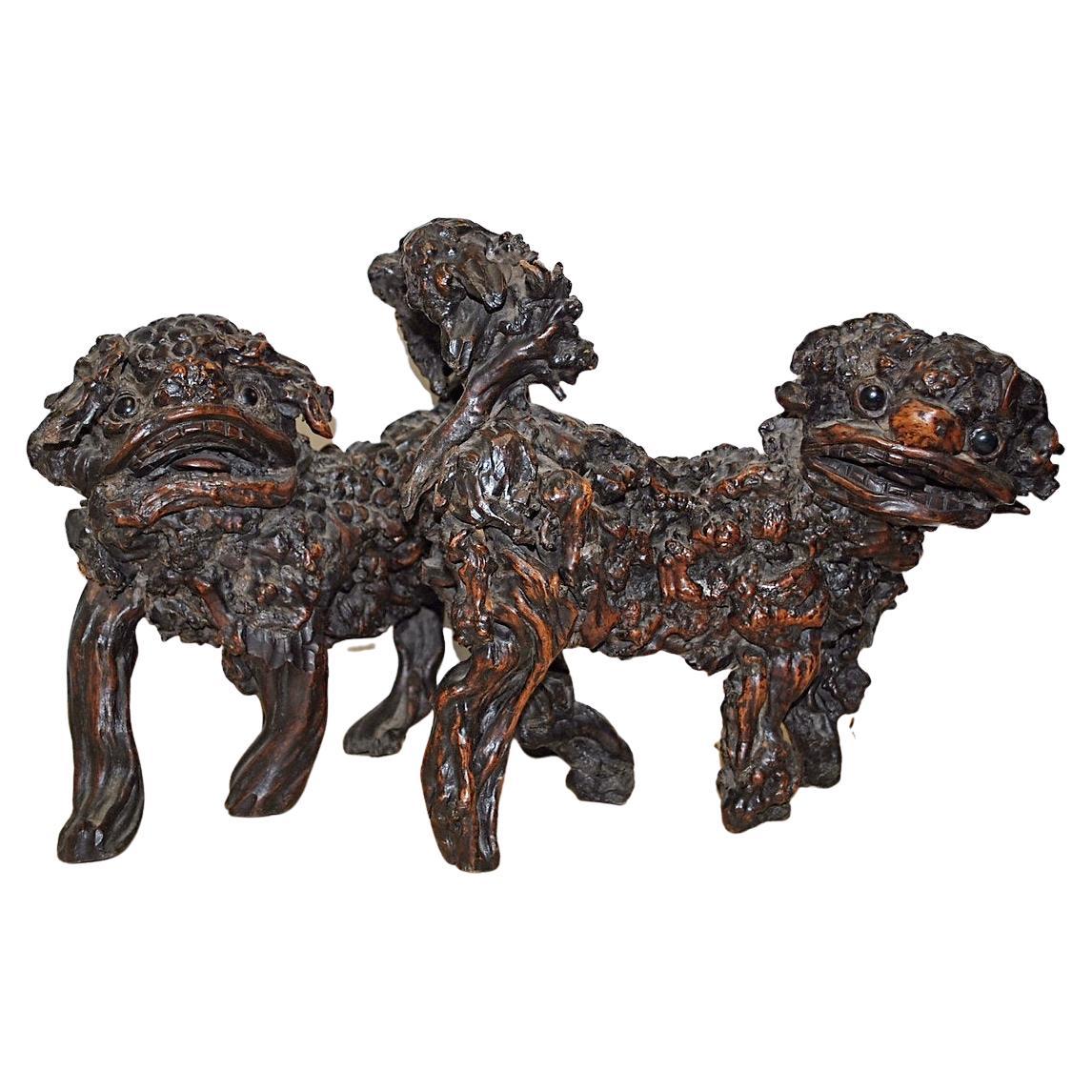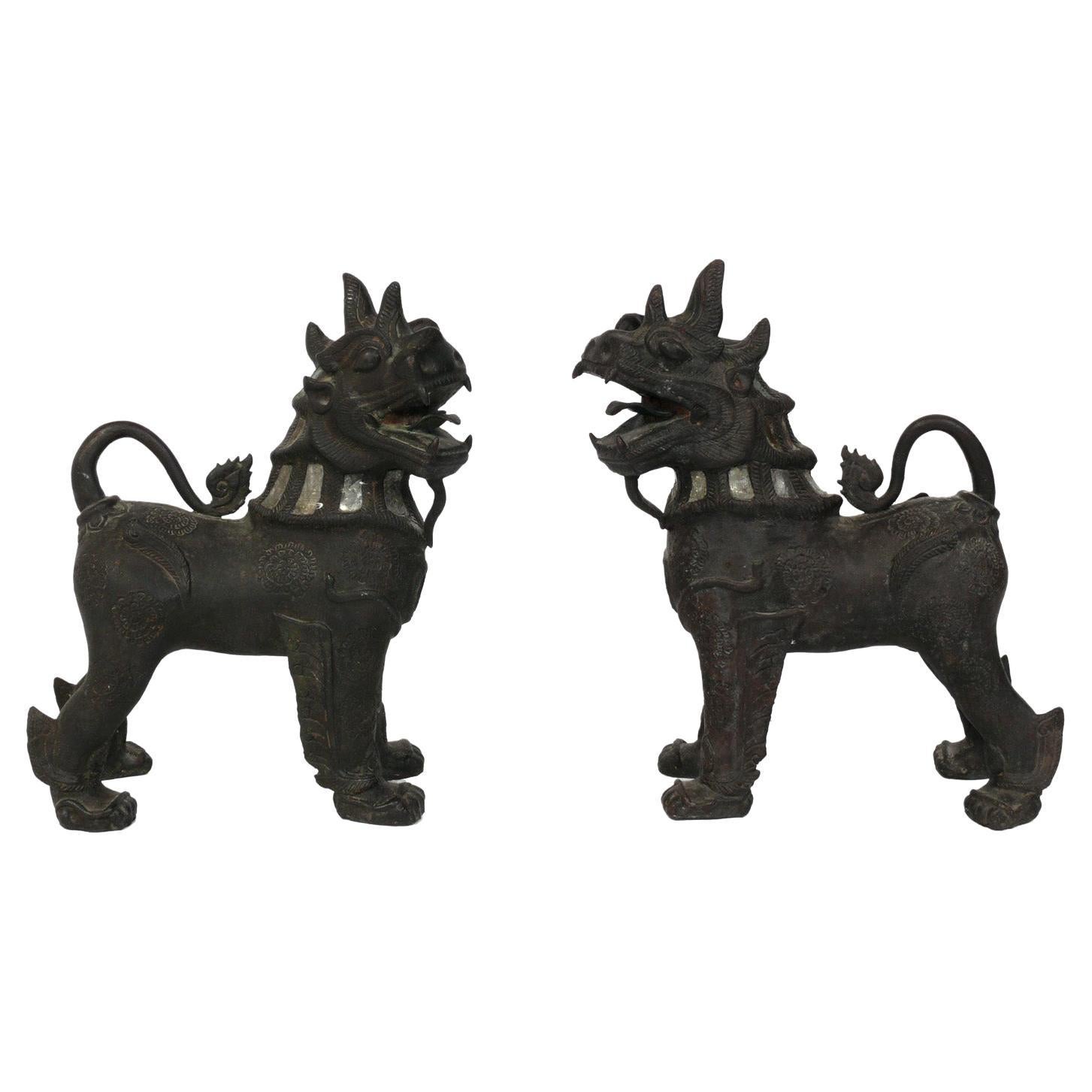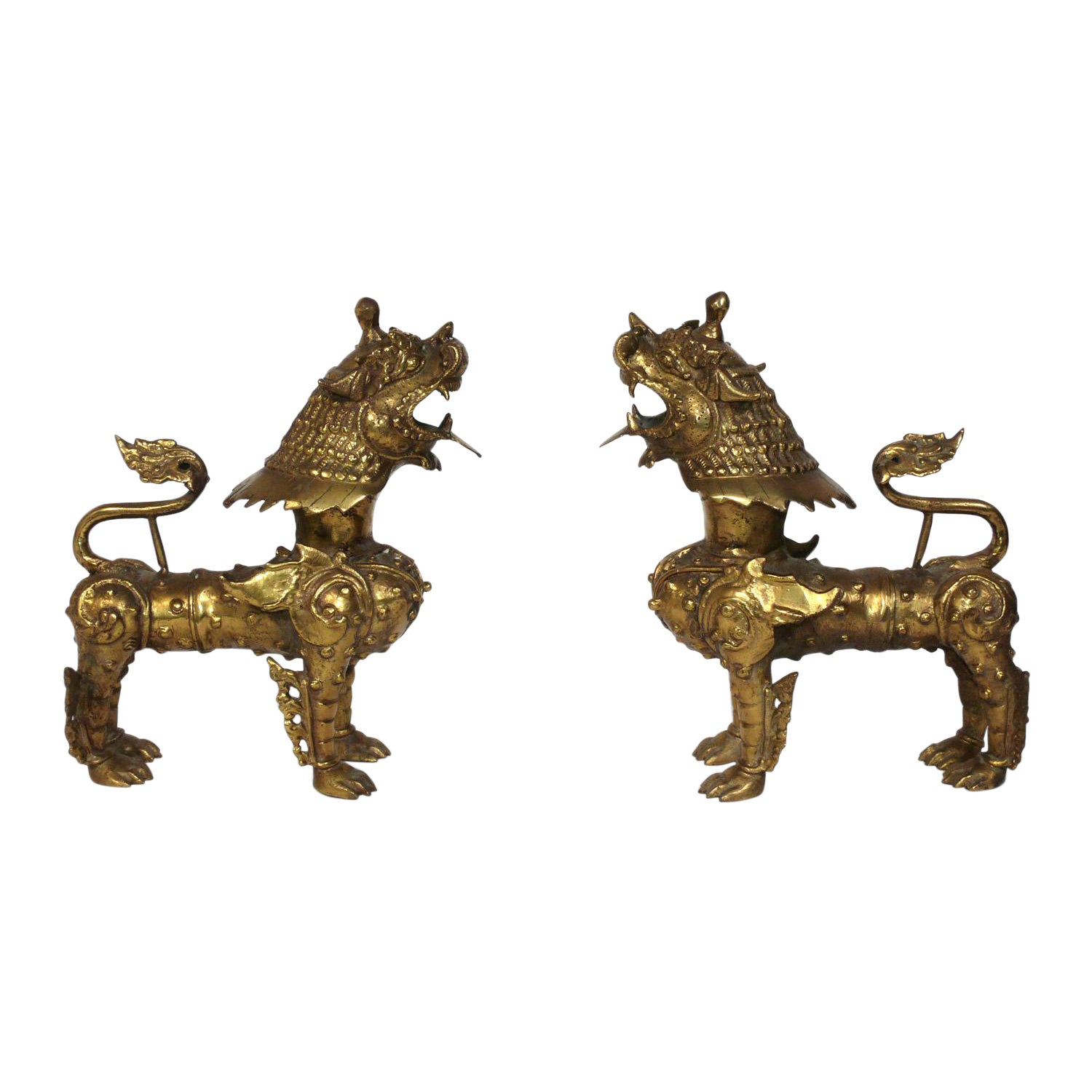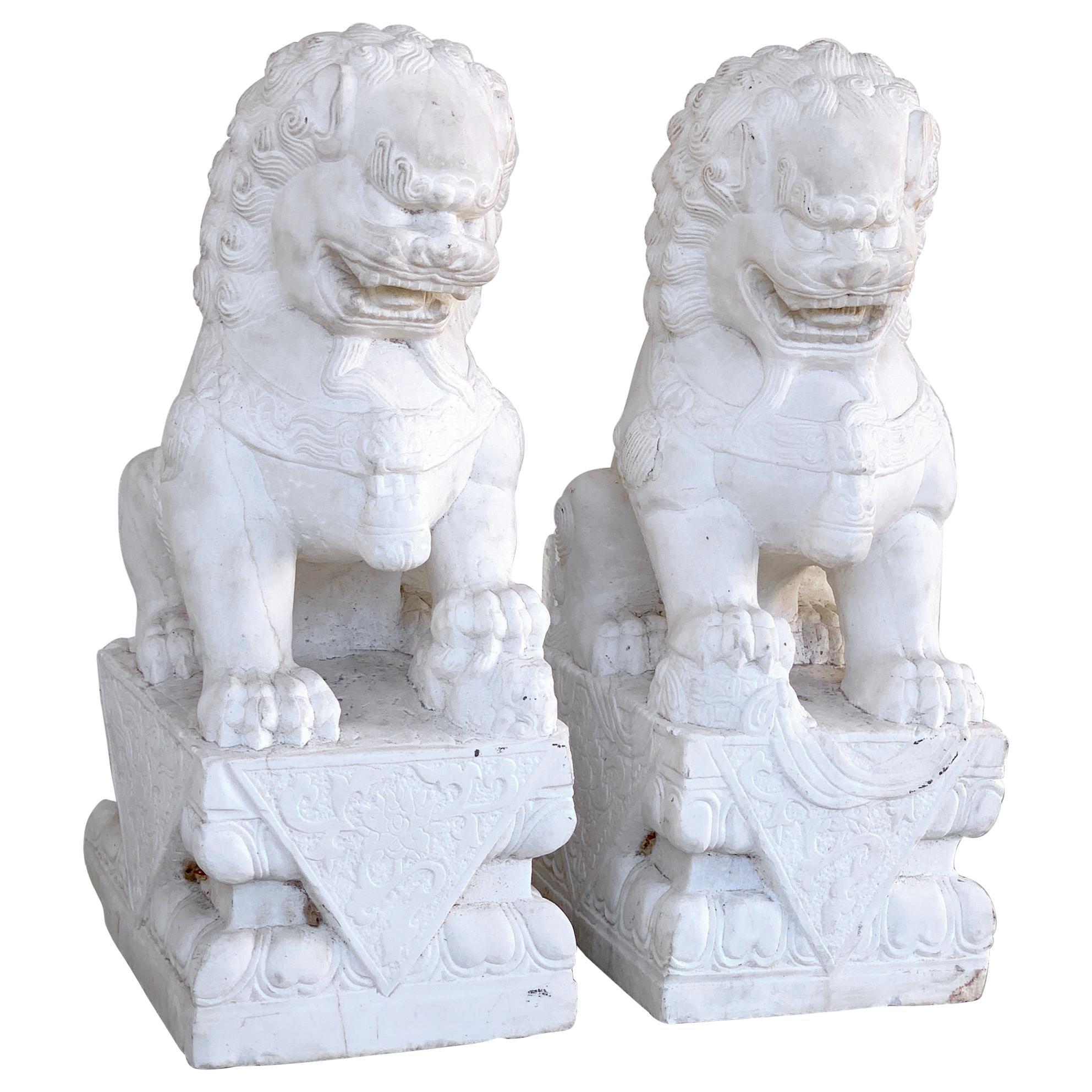Items Similar to Colorful Pair of Asian Foo Dogs Believed to be Chinese circa 1960s or Earlier
Want more images or videos?
Request additional images or videos from the seller
1 of 5
Colorful Pair of Asian Foo Dogs Believed to be Chinese circa 1960s or Earlier
About the Item
Colorful Pair of Asian Foo Dogs, believed to be Chinese, circa 1960s or earlier.
- Dimensions:Height: 15 in (38.1 cm)Width: 9.5 in (24.13 cm)Depth: 18 in (45.72 cm)
- Sold As:Set of 2
- Style:Chinese Export (In the Style Of)
- Materials and Techniques:
- Place of Origin:
- Period:
- Date of Manufacture:1960s
- Condition:Wear consistent with age and use. Very good original condition with no chips, cracks, or restoraton noted.
- Seller Location:Atlanta, GA
- Reference Number:1stDibs: LU871831511952
About the Seller
4.6
Vetted Seller
These experienced sellers undergo a comprehensive evaluation by our team of in-house experts.
Established in 1996
1stDibs seller since 2009
2,194 sales on 1stDibs
Typical response time: 3 hours
- ShippingRetrieving quote...Ships From: Atlanta, GA
- Return PolicyThis item cannot be returned.
More From This SellerView All
- Large Asian Bronze Foo DogsLocated in Atlanta, GAPair of Large Asian Bronze Foo Dogs or Kylin Dragon, probably Chinese, circa 1950s or earlier. They retain their warm original patina. These were purch...Category
Vintage 1950s Chinese Chinese Export Animal Sculptures
MaterialsBronze
- Bronze Chinese Foo DogsLocated in Atlanta, GAPair of Asian Bronze and Inlaid Glass Foo Dogs or Kylin Dragon, probably Chinese, circa 1950s or earlier. They retain their warm original patina. These were purchased from the Manhattan estate of a Japanese American that traveled extensively through Asia in the 1940s-1960s purchasing antiques in China...Category
Vintage 1950s Chinese Chinese Export Sculptures and Carvings
MaterialsBronze
- Asian Bronze Foo DogsLocated in Atlanta, GAPair of Asian Bronze Foo Dogs or Kylin Dragon, probably Tibetan, circa 1940s or earlier. They retain their warm original patina. These were purchased f...Category
Vintage 1940s Tibetan Chinoiserie Sculptures and Carvings
MaterialsBronze
- Group of Asian Hand Carved Gilt Wood PlaquesLocated in Atlanta, GAGroup of five hand carved gilt wood Asian plaques, probably framed in the 1950s, the carvings may be much earlier. Beautifully framed in gilt frames with ...Category
Vintage 1950s Chinese Chinoiserie Sculptures and Carvings
MaterialsBrass
- Collection of Japanese and Chinese MasksLocated in Atlanta, GACollection of eight Japanese and Chinese masks, circa 1950s or earlier. These were recently purchased from the Manhattan estate of a Japanese man who travel...Category
Vintage 1950s Japanese Chinoiserie Sculptures and Carvings
MaterialsMetal
- Pair of Asian Influenced End Tables or NightstandsLocated in Atlanta, GAPair of Asian influenced end tables or nightstands, Asian, circa 1950s. They are a versatile size and can be used as side or end tables, or as nightstands. These tables are currently...Category
Vintage 1950s Chinese Chinoiserie End Tables
MaterialsWood
You May Also Like
- Pair of Chinese foo dogsLocated in Cheltenham, GBWe are delighted to present an extraordinary and exceptionally rare pair of 18th Century Chinese Dogs of Foo. These remarkable sculptures are meticulously ...Category
Antique 18th Century Chinese Qing Sculptures and Carvings
MaterialsWood
- Fine Pair of Chinese Export Marble Seated Foo DogsLocated in West Palm Beach, FLFine pair of Chinese Export marble seated foo dogs, well carved, the male standing 26-inches high, the female 25.5-inches high, beautiful weathered patina....Category
20th Century Chinese Chinese Export Garden Ornaments
MaterialsMarble
- A pair of 19th Century carved Foo temple dogs or Chinese guardian LionsLocated in London, GBChinese guardian lions, or imperial guardian lions, are a traditional Chinese architectural ornament. Typically made of stone, they are also known as stone lions or shishi (石獅; shíshī). They are known in colloquial English as lion dogs or foo dogs / fu dogs. The concept, which originated and became popular in Chinese Buddhism, features a pair of highly stylized lions—often one male with a ball and one female with a cub—which were thought to protect the building from harmful spiritual influences and harmful people that might be a threat. Used in imperial Chinese palaces and tombs, the lions subsequently spread to other parts of Asia including Japan (see komainu), Korea, Philippines, Tibet, Thailand, Myanmar, Vietnam, Sri Lanka, Nepal, Cambodia, Laos, and Malaysia. There has been extensive interaction between Chinese mythology and Confucianism, Taoism, and Buddhism. Elements of pre-Han dynasty mythology such as those in Classic of Mountains and Seas were adapted into these belief systems as they developed (in the case of Taoism), or were assimilated into Chinese culture (in the case of Buddhism). Elements from the teachings and beliefs of these systems became incorporated into Chinese mythology. For example, the Taoist belief of a spiritual Paradise became incorporated into mythology as the place where immortals and deities used to dwell. Sometimes mythological and religious ideas have become widespread across China's many regions and diverse ethnic societies. In other cases, beliefs are more limited to certain social groups, for example, the veneration of white stones by the Qiang. One mythological theme that has a long history and many variations involves a shamanic world view, for example in the cases of Mongolian shamanism among the Mongols, Hmong shamanism among the Miao people, and the shamanic beliefs of the Qing dynasty from 1643 to 1912, derived from the Manchus. Politically, mythology was often used to legitimize the dynasties of China, with the founding house of a dynasty claiming a divine descent. Mythology and philosophy. Further information: Chinese philosophy True mythology is distinguished from philosophical treatises and theories. Elaborations on the Wu Xing are not really part of mythology, although belief in five elements could appear. The Hundred Schools of Thought is a phrase suggesting the diversity of philosophical thought that developed during the Warring States of China. Then, and subsequently, philosophical movements had a complicated relationship with mythology. However, as far as they influence or are influenced by mythology, divides the philosophical camps into two rough halves, a Liberal group and a Conservative group. The liberal group being associated with the idea of individuality and change, for example as seen in the mythology of divination in China, such as the mythology of the dragon horse that delivered the eight bagua diagrams to Fu Xi, and methods of individual empowerment as seen in the Yi Jing (Book of Changes). The Liberal tendency is towards individual freedom, Daoism, and Nature. The relationship of the Conservative philosophies to mythology is seen in the legendary Nine Tripod Cauldrons, mythology about the emperors and central bureaucratic governance, Confucianism, written histories, ceremonial observances, subordination of the individual to the social groups of family and state, and a fixation on stability and enduring institutions. The distinction between the Liberal and Conservative is very general, but important in Chinese thought. Contradictions can be found in the details, however these are often traditional, such as the embrace by Confucius of the philosophical aspects of the Yi Jing, and the back-and-forth about the Mandate of Heaven wherein one dynasty ends and another begins based according to accounts (some of heavily mythological) where the Way of Heaven results in change, but then a new ethical stable dynasty becomes established. Examples of this include the stories of Yi Yin, Tang of Shang and Jie of Xia or the similar fantastic stories around Duke of Zhou and King Zhou of Shang. Mythology exists in relationship with other aspects of society and culture, such as ritual. Various rituals are explained by mythology. For example, the ritual burning of mortuary banknotes (Hell Money), lighting fireworks, and so on. A good example of the relationship of Chinese mythology and ritual is the Yubu, also known as the Steps or Paces of Yu. During the course of his activities in controlling the Great Flood, Yu was supposed to have so fatigued himself that he lost all the hair from his legs and developed a serious limp. Daoist practitioners sometimes incorporate a curiously choreographed pedal locomotion into various rituals. Mythology and practice, one explains the other: in these rituals, the sacred time of Yu merges with the sacral practice of the present. Various ideas about the nature of the earth, the universe, and their relationship to each other have historically existed as either a background or a focus of mythologies. One typical view is of a square earth separated from a round sky by sky pillars (mountains, trees, or undefined). Above the sky is the realm of Heaven, often viewed of as a vast area, with many inhabitants. Often the heavenly inhabitants are thought to be of an "as above so below" nature, their lives and social arrangements being parallel to those on earth, with a hierarchical government run by a supreme emperor, many palaces and lesser dwellings, a vast bureaucracy of many functions, clerks, guards, and servants. Below was a vast under ground land, also known as Diyu, Yellow Springs, Hell, and other terms. As time progressed, the idea of an underground land in which the souls of the departed were punished for their misdeeds during life became explicit, related to developments in Daoism and Buddhism. The underground world also came to be conceived of as inhabited by a vast bureaucracy, with kings, judges, torturers, conductors of souls, minor bureaucrats, recording secretaries, similar to the structure of society in the Middle Kingdom (earthly China). Chinese temple Dogs...Category
Antique 1860s Chinese Chinese Export Sculptures and Carvings
MaterialsHardwood
- Pair of Patinated Bronze Chinese Foo DogsLocated in San Diego, CAPair of patinated bronze Chinese foo dogs, circa 1930s. Excellent vintage condition with amazing detail and a gorgeous patina. Each dog measures 6.5" high x 3.5" deep x 4.75" wide. #...Category
Early 20th Century Chinese Sculptures and Carvings
MaterialsBronze
- Pair of Patinated Bronze Chinese Foo DogsLocated in San Diego, CAPair of patinated bronze Chinese foo dogs, circa 1950s. The pair are in good vintage condition with amazing detail and a gorgeous patina. Each dog measures 4"W x 3"D x 3.5"H #3295Category
Mid-20th Century Chinese Sculptures and Carvings
MaterialsBronze
- Pair Early 20th Century Chinese Ceramic Foo DogsLocated in Silvolde, GelderlandLow fired ceramic Chinese "Ming" style pair matching Foo Dogs with beautiful cracked and dripped glazed four color finish. This beautiful couple Foo Dogs is visibly handmade because the prints of the fingers the artist are visible in the earthenware. These Foo Dogs makes displayed in your place a great...Category
Early 20th Century Chinese Ming Ceramics
MaterialsEarthenware
Recently Viewed
View AllMore Ways To Browse
Chinese And Japanese Art And Furniture
Large Wooden Carvings
Buddha Mara
Asian Wooden Holder
Japanese Pagoda Light
Wooden Rosary Beads
Japanese Prayer
Chocolate Buddha
Bronze Budai
Bronze Laughing Buddha
Tadao 80
Tibetan Tsa Tsa
Transom Carving
Bato Kannon
Gosho Ningyo
Stone Garden Art Sculpture Outdoor
Antique Wood Foo Dogs
Thai Temple Guardian
